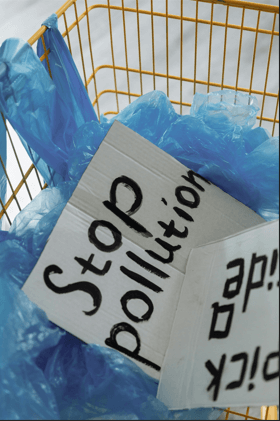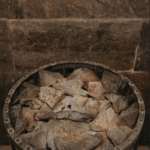In a world increasingly concerned with plastic waste, one simple solution is gaining popularity: the pappedeckel. The term pappedeckel comes from German, literally meaning “cardboard lid.” This unassuming cover is designed to seal containers—like cups, bowls, and jars—using cardboard instead of plastic or foil. Though small and plain in appearance, the pappedeckel is an innovative addition to modern packaging, offering practicality and sustainability in equal measure.
Businesses in Europe and beyond have started to adopt pappedeckel lids as a more environmentally friendly alternative. In coffee shops, restaurants, and artisan food producers, these lids help protect products while cutting down on plastic waste. In this blog, we will explore what pappedeckel lids are, their origins and materials, the advantages they provide, and the variety of ways they are used. By understanding this simple yet versatile item, we can appreciate how even a small cardboard lid can contribute to greener packaging and creative design.
What is a Pappedeckel?
A pappedeckel is essentially a cardboard lid (the name comes from the German words Pappe for cardboard and Deckel for lid). Its purpose is simply to cover and seal the opening of a container. These lids are usually flat and round, though they can be made in various sizes and shapes to fit different containers. The edges of a pappedeckel are folded or creased so it grips the container’s rim securely, forming a barrier against spills and contaminants. Despite being lightweight, this simple lid can be surprisingly rigid and helps to keep contents fresh.
For many manufacturers, pappedeckel lids can be customized in size and thickness to suit specific needs. They are most commonly used in food packaging—think takeout meals, cups of soup, or jars of condiments—but they can also serve practical roles in other industries or even for home and craft use. Essentially, whenever a temporary disposable cover is needed and sustainability is a concern, a pappedeckel is an option. Its simple design makes it easy to stack, store, and transport without adding significant weight or bulk.
History and Origin of Pappedeckel
Cardboard lids have a long, though often unnoticed, presence in packaging history. The specific concept of the pappedeckel, however, originated in Germany. In the late 20th century, as industries began looking for alternatives to plastic, innovators introduced cardboard-based lids for cups and containers. Early designs were simple: flat, unprinted disks folded to form a rim. Over time, these lids were improved by adding moisture-resistant treatments and using modern printing and cutting technologies.
As concern for environmental issues grew—especially regarding single-use plastics—pappedeckel gained popularity. German cafés and bakeries were among the first to adopt these lids as a green alternative for their takeaway items. From there, awareness spread. Today, using a cardboard lid has caught on in many countries, embraced by businesses that want to cut plastic waste without sacrificing product quality. The term “pappedeckel” remains most common in German-speaking markets, but the idea is simple enough that similar cardboard lids can be found around the world.
Materials and Manufacturing
Pappedeckel lids are primarily made of cardboard or heavy paperboard. The exact material mix varies: some are made from 100% recycled paper fibers, while others use virgin pulp combined with recycled material. High-quality lids use sturdy, food-grade board that meets safety standards. To keep them lightweight yet rigid, the cardboard is often a single thick layer or multiple layers laminated together. Many producers use responsibly sourced paper (such as FSC-certified board) to ensure sustainability.
The process of making pappedeckel is quite straightforward and is similar to other cardboard products. It typically involves these steps:
-
Cardboard Preparation: Large sheets or rolls of paperboard are prepared. They may already have branding printed on them, or printing can be done after cutting.
-
Cutting: The cardboard sheet is fed into a die-cutter machine, which punches out the lid shapes (such as circles or squares) at high speed.
-
Folding & Gluing: Each lid’s edges are folded over and glued together with a water-based adhesive, forming the rim that lets the lid grip the container.
-
Inspection & Packaging: The assembled lids are inspected for quality, sorted by size, and bundled or boxed for shipping to customers.
Because this process uses standard cardboard-processing equipment, manufacturers can produce thousands of pappedeckel per minute. Any scraps or test pieces are simply recycled back into production. Overall, making these lids requires much less energy and fewer chemicals than making plastic lids, contributing greatly to their sustainability.
Key Benefits of Pappedeckel
-
Eco-friendly and sustainable: Pappedeckel lids are crafted from renewable plant fibers and are 100% biodegradable and recyclable. Using them instead of plastic significantly cuts down on persistent waste. Companies and individuals who switch to these cardboard lids reduce their carbon footprint and support a more circular packaging system.
-
Lightweight and cost-efficient: Made of paper, pappedeckel lids are very light. This lowers the weight of packages and can reduce shipping costs. Lighter loads require less fuel for transport, saving energy. In many cases, producing cardboard lids is also cheaper than making metal or plastic lids at scale. Those savings add up over time for manufacturers and sellers.
-
Protects freshness: Despite being simple, these lids fit tightly and protect contents from dust or insects. They form a solid barrier that keeps food fresh for delivery or storage. Some pappedeckel designs are treated to resist grease or minor spills, which helps maintain product quality without relying on plastic.
-
Customizable and brand-friendly: The flat surface can be easily printed with logos, messages, or artwork. This turns a lid into a marketing space. Companies often print their branding on the pappedeckel to reinforce their identity. For example, a coffee shop might stamp each lid with its logo or a “green” message, reminding customers of the eco-friendly choice.
-
Versatile for many uses: Pappedeckel lids come in a variety of sizes and shapes. They are popular for covering coffee cups, soup containers, salad boxes, jars, and more. Their sturdy yet lightweight nature also makes them great for crafts and events. People use them as coasters, labels, or even art materials. This versatility means they can find new life even after their original use.
These benefits make pappedeckel an attractive option for businesses and consumers. The combination of practicality and eco-friendliness is hard to beat in today’s market.
Uses and Applications
-
Food and Beverage: Restaurants, cafes, and takeout services use pappedeckel for coffee cups, soup bowls, yogurt cups, and other containers. The lids prevent spills and help keep items fresh during delivery. Many sustainability-minded eateries have replaced plastic covers with cardboard lids to match their green image.
-
Retail and E-Commerce: Cardboard lids can cover product boxes (for items like shoes, gifts, or electronics) or be placed under a main lid for extra protection. They can also be cut to fit custom containers. Retailers value that these lids provide padding without much added weight, and customers appreciate their recyclable nature.
-
Crafts, Events, and Home: Pappedeckel often get a second life outside the kitchen. In homes and schools, they are used in art projects (painted for decorations, made into coasters, etc.). Event planners use them as rustic place cards or signage at weddings and parties. Their sturdiness makes them handy for DIY organizing too, such as labels on boxes or small trays.
These examples highlight the broad utility of pappedeckel. Far from a single-use throwaway, they can integrate into various facets of daily life thanks to their versatility.
Branding and Design Opportunities
The design possibilities for pappedeckel lids extend beyond basic function. Because they are made of paper, these lids can be printed with almost any image or text. Businesses often use this by placing logos, slogans, or graphics on each lid, turning even small food containers into branding opportunities. For example, a juice bar could print a colorful image or a slogan about healthy living on every lid, reinforcing its message with each order.
Customization goes beyond print. Manufacturers can cut pappedeckel into special shapes for holidays or promotions. They can also emboss textures or add eco-friendly varnishes to create a premium feel. These creative touches help lids stand out. Ultimately, a well-designed pappedeckel lid can improve the customer experience and make a product more memorable.
Environmental Impact and Sustainability
The environmental benefits of pappedeckel lids are a major reason they exist. In a landfill, cardboard breaks down in months, whereas plastic lids may take centuries. Because they are compostable and recyclable, pappedeckel reduce the long-term pollution caused by single-use containers. Switching to cardboard lids can drastically cut the waste footprint of a business or event.
Their production process is also greener. Making cardboard (especially recycled cardboard) uses less energy and releases fewer greenhouse gases than producing plastic. Many pappedeckel are made from recycled paper, meaning less demand for new trees. Even when new fiber is used, it often comes from managed forests. The cumulative effect is lower overall resource use and emissions. Taken together, every pappedeckel lid replaced is one small step toward cleaner air, healthier ecosystems, and a more sustainable packaging industry.
Challenges and Considerations
-
Moisture Sensitivity: Cardboard naturally absorbs liquid and can weaken when very wet or greasy. A plain pappedeckel will sag if used with heavy soup or oily food. Some lids have a thin biodegradable coating to help resist moisture, but they won’t be as waterproof as plastic.
-
Strength and Durability: Pappedeckel lids are sturdy but not as tough as plastic. Heavy loads or rough handling can cause them to bend or tear. They work well for everyday covers (like coffee cups or salad bowls), but under stress they are more fragile than a plastic lid.
-
Transition Costs: Changing from plastic to cardboard lids can require new processes or suppliers, which may incur upfront costs. Small businesses might need to adjust machinery or order custom sizes. However, when produced in volume, these lids often become cost-competitive over time.
-
Consumer Awareness: Many people are still unfamiliar with cardboard lids. Some might mistake a pappedeckel for a coaster or throw it in the wrong bin. Clear labeling (for recycling or composting) and education can help. As green packaging becomes more common, this confusion will fade.
-
Not a One-Size-Fits-All: Cardboard lids can’t replace every kind of cover. For example, they aren’t airtight or heat-resistant, so products that need special sealing, freezing, or oven use will still require plastic or metal lids. Pappedeckel work best where a simple protective cover is sufficient.
Many of these challenges are being addressed by ongoing innovations. Improved coatings, stronger fiber blends, and better recycling infrastructure continue to make pappedeckel more practical and user-friendly each year. Even now, the environmental trade-offs often justify using them in many scenarios.
The Future of Pappedeckel
With demand for sustainable packaging growing, the outlook for pappedeckel is bright. We may see even more plant-based board materials (like bamboo or agricultural waste fibers) used to make these lids, making them even greener. Improved biodegradable coatings could allow cardboard lids to handle hot soups or frozen foods better. Printing technology will continue improving too, perhaps allowing personalized or interactive designs on each lid.
In many countries, regulations are already pushing to ban single-use plastics. This will likely encourage cafes, restaurants, and retailers to adopt cardboard lids as a drop-in alternative. In the coming years, pappedeckel could become a standard green option across the food industry and beyond, combining functionality with environmental responsibility.
Conclusion
The pappedeckel is a great example of how a simple idea can make a big difference. This humble cardboard lid covers products as well as a plastic lid, but with far less impact on the environment. We have seen how pappedeckel are made, why they are used, and the benefits they bring. Businesses that adopt these lids can significantly reduce plastic waste and appeal to eco-conscious customers. Meanwhile, creative individuals also find new ways to repurpose them at home or in crafts.
In an era when sustainability is key, even small changes make an impact. Next time you enjoy a coffee or a takeout meal, notice the lid – it could be a pappedeckel quietly making packaging greener. Choosing options like this helps us move toward a more sustainable future.








